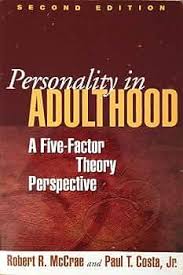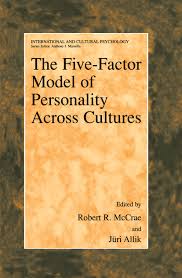Identity Assessment
Faith Identity's assessments are based on the Five Factor Model (FFM), also known as the Big Five Personality Assessment.
Five Factor Model (FFM)

The Five Factor Model (FFM), also known as the Big Five Personality Assessment is the most scientifically validated and reliable psychological model to measure personality. The FFM theory is widely accepted today because this model presents a blueprint for understanding the main dimensions of personality. Experts have found that these traits are universal and provide an accurate portrait of human personality. Key strengths of the FFM are:
- Universality: The FFM is considered one of the most universal and culturally robust models for describing personality. It has been studied and validated in a wide range of cultural contexts, making it applicable across diverse populations.
- Research Support: The FFM is supported by a substantial body of research and has demonstrated good reliability and validity in various settings.
- Consistency: The five-factor structure of the FFM, including Openness, Conscientiousness, Extraversion, Agreeableness, and Neuroticism, provides a consistent and structured framework for understanding personality traits.
- Predictive Validity: The FFM has demonstrated predictive validity in various domains, including job performance, interpersonal relationships, and mental health. It can help in understanding and predicting behavior in these areas.
- Ease of Use: FFM assessments are readily available and user-friendly, making them accessible for both research and practical applications.
Assessment History
The Five Factor Model (FFM) has been used and developed over several decades. Its origins can be traced back to the mid-20th century, and it has been refined and expanded upon by numerous researchers since then. Here is a brief timeline of its history:
- 1930s-1950s: Early research into personality traits laid the foundation for the Big Five traits. Researchers like Raymond Cattell and Hans Eysenck identified various dimensions of personality.
- 1960s-1970s: The FFM began to take shape as researchers started to identify the core traits that consistently appeared in their studies. Some early versions of the Big Five were proposed during this period.
- 1980s: Paul Costa and Robert McCrae, two prominent psychologists, played a significant role in developing the FFM as we know it today. They conducted extensive research, and their work led to a more standardized model of the Big Five.
- 1990s-Present: The FFM gained widespread acceptance in the field of psychology and has since been used in various applications, including personality assessments, clinical psychology, organizational psychology, and social psychology. It has also been adapted and translated into many languages for cross-cultural research.
The FFM has stood the test of time and is now considered one of the most well-established and widely accepted models for describing and assessing personality traits. It continues to be a valuable tool in psychological research and practical applications in fields like human resources, education, and clinical psychology.


